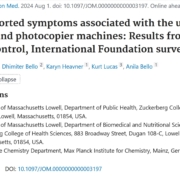Beiträge
https://www.nano-control.org/wp-content/uploads/2024/10/xerox-laserdrucker-kleines-kind-im-nebel-282441990.png
1024
1024
Heike Krüger
https://www.nano-control.org/wp-content/uploads/2016/05/Logo-nano-Control-Neu-mit-Schriftzug-300x126.png
Heike Krüger2024-11-16 21:08:502024-11-16 21:12:53Indoor Air is Essential for Health:
Reliable, Clean Air to Breathe
https://www.nano-control.org/wp-content/uploads/2024/08/Screenshot-Self-reported-Symptoms.jpg
1371
2268
Heike Krüger
https://www.nano-control.org/wp-content/uploads/2016/05/Logo-nano-Control-Neu-mit-Schriftzug-300x126.png
Heike Krüger2024-08-20 09:29:092024-09-02 16:50:43Self-reported symptoms associated with the use of printer and photocopier machines: Results from the nano-Control, International Foundation survey

 nano-control - Playground KI
nano-control - Playground KI